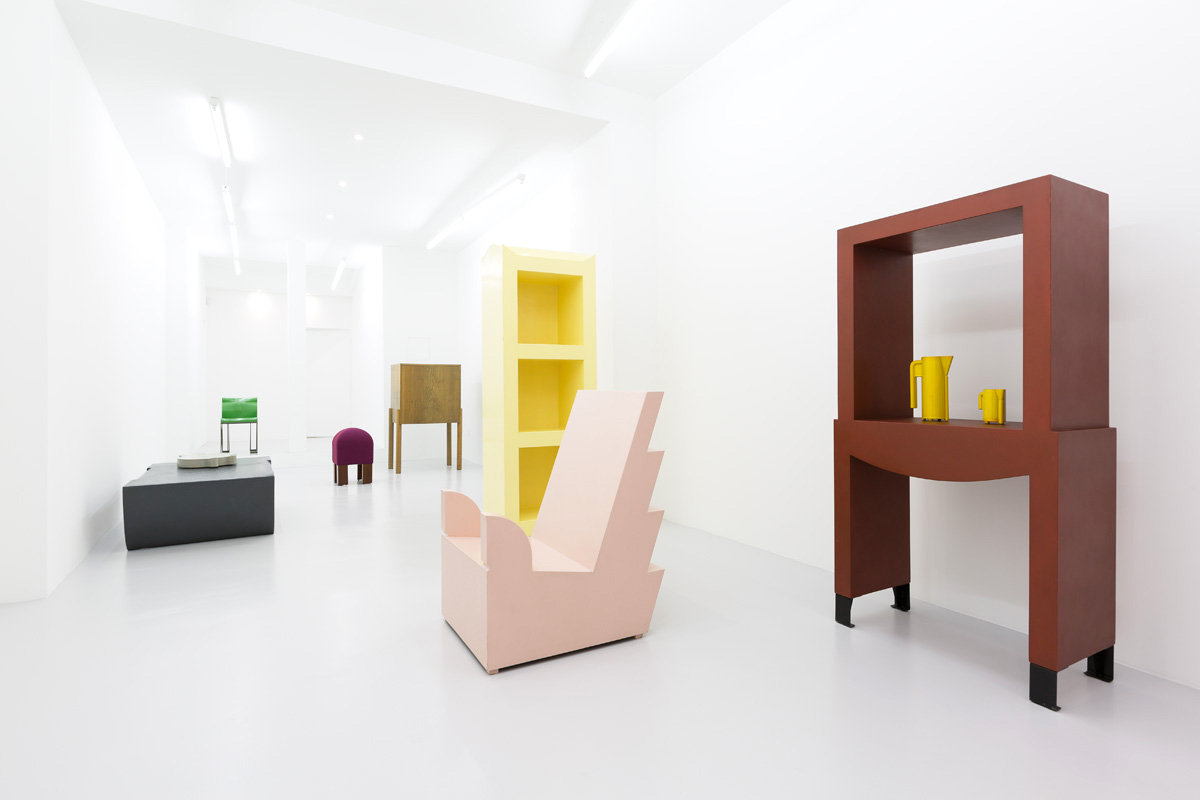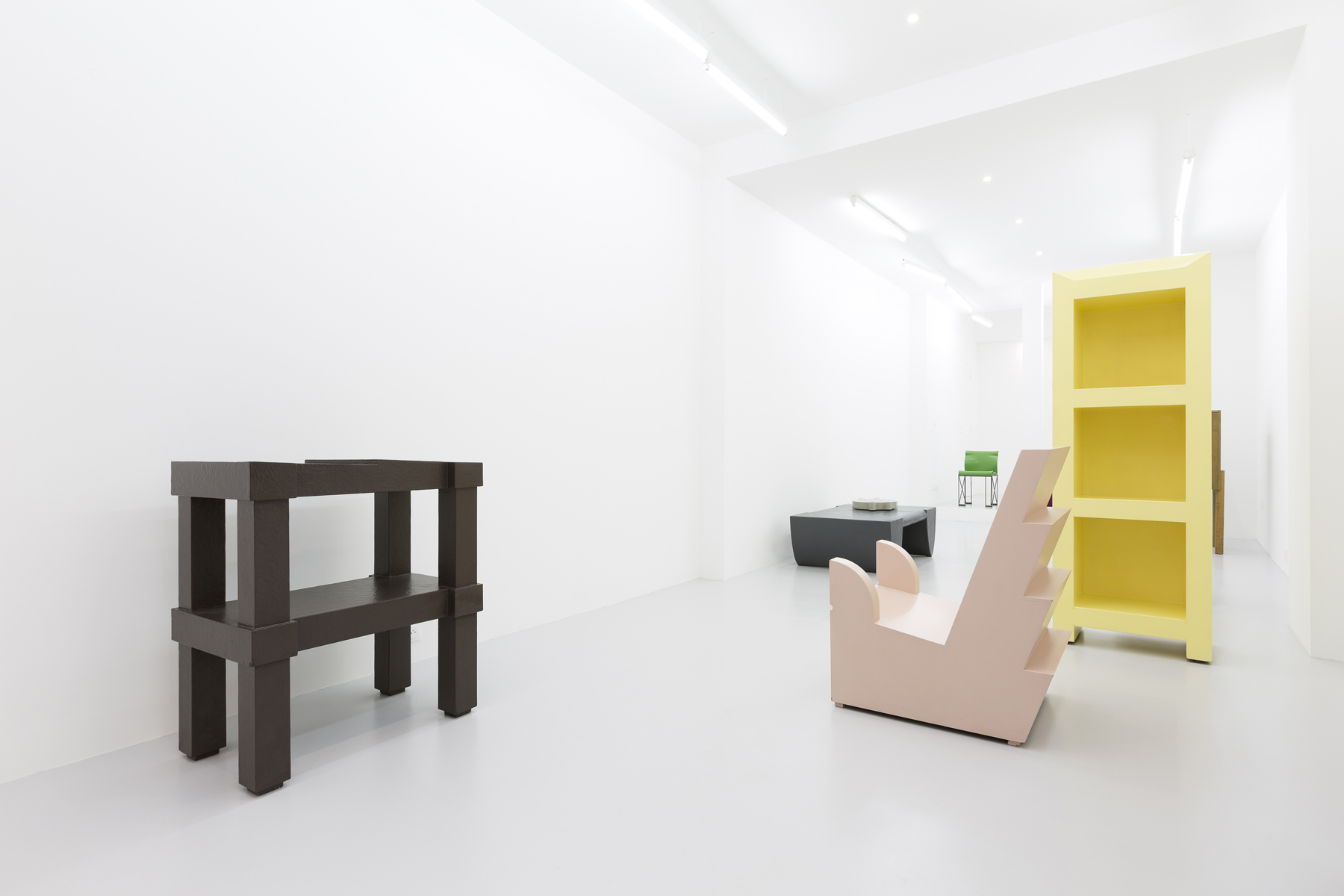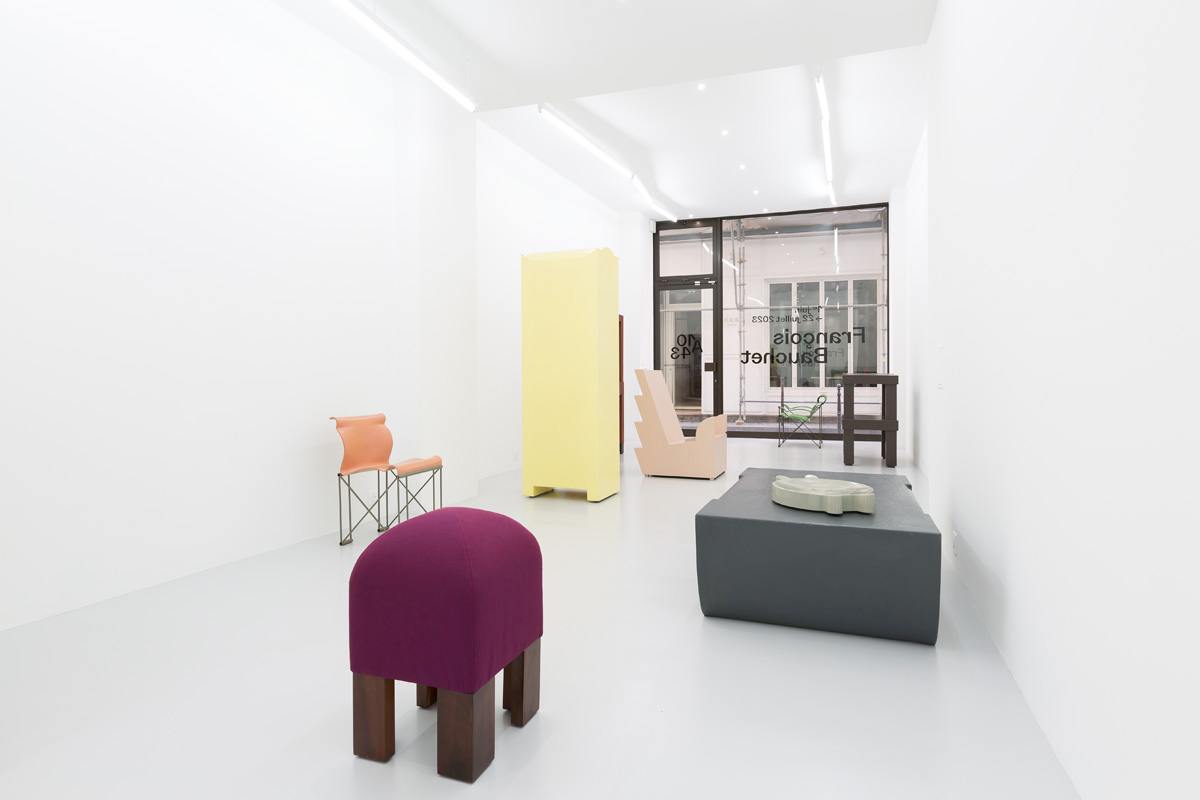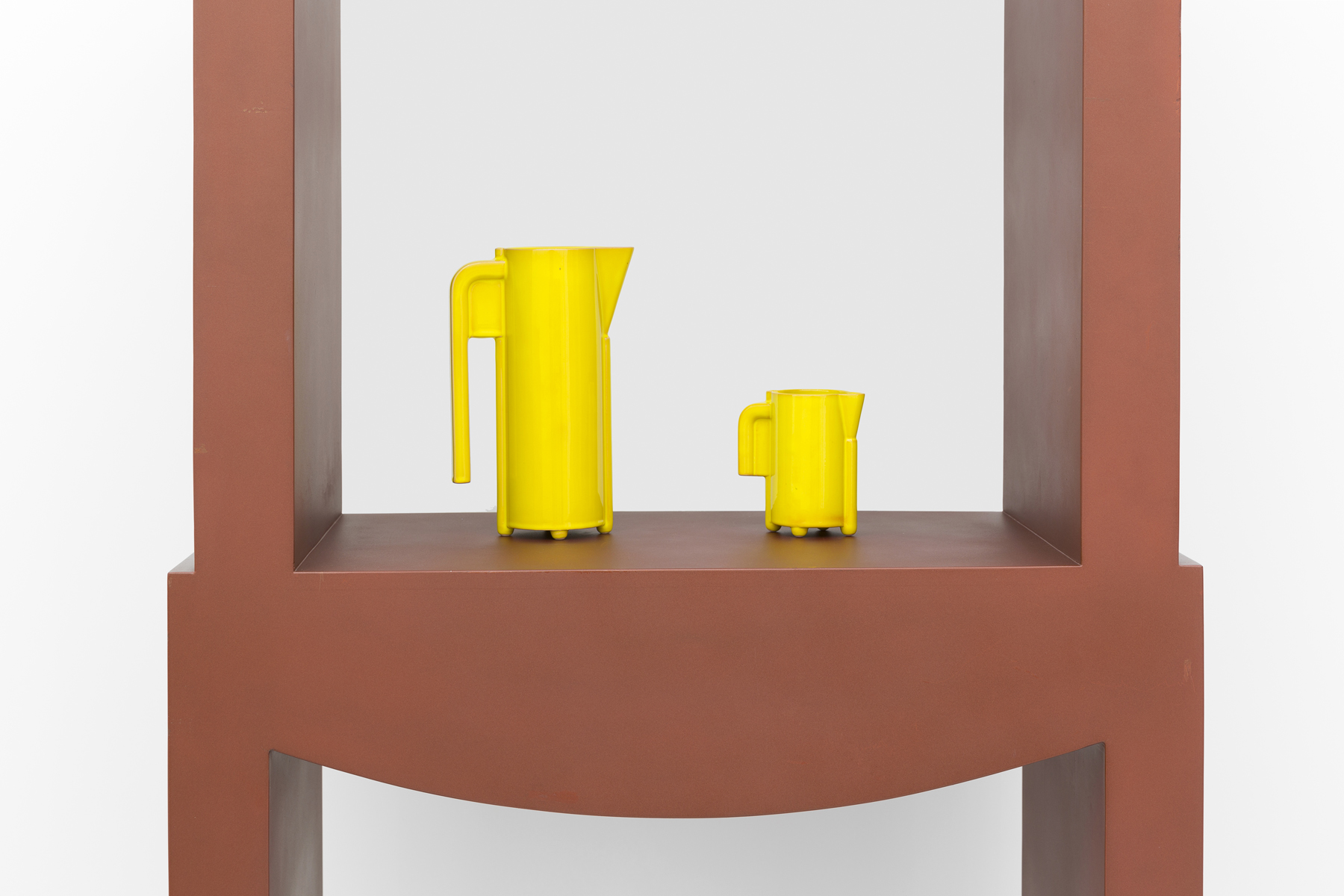







François Bauchet
June 1st
︎︎︎ July 22nd, 2023
François Bauchet’s career began in the 1980s. Today represented by one of the most significant design galleries, Galerie kreo, throughout his career he has developed work of exceptional quality. True to himself, he has remained discreet and modest while others built their reputation on discipline and determination. Despite being less visible in the media than some of his peers, Bauchet took part in major exhibitions of the period (Via, Fondation Cartier, Galerie Néotù, etc.). As A1043 was born with François Bauchet as such (our first encounter with design dates to 1988 during one of his conferences), we have always entertained the idea of holding an exhibition of his early work. Our reasons for doing so are straightforward and clear and this is far from the case for his work.
François Bauchet's works are mainly composed of solid forms, but they are also very subtle. His objects should not be regarded merely at face value. Although they already appear rich and generous, they are even more so than they seem. It is common for an object to reveal a story, or a moment embodied in a compact form with a strong presence. Some of them are almost monumental. The objects created are more than functional. They contain stories but they also have the ability to create them. François Bauchet's work cannot therefore be classified in the usual art or design categories, his positioning is more unique. You must look for what is perception and construction to truly understand it.
To discuss François Bauchet's work, terminology related to sculpture is relevant. We can speak of simple volumes, fullness, density, monumentality, monoliths, archetypes, homogeneity, concreteness, solidity, materiality, austerity, but also of secrecy, statuary, ceremony and mystery. Although we are in the register of sculpture, we are not talking about George Rickey or Fausto Melotti, but rather Richard Serra and Per Kirkeby. Another approach will show us that limiting ourselves to comments on plasticity would be reductive. Although the functional qualities are not immediately obvious, each object retains a very strong link to its use.
François Bauchet "is interested in behaviours, gauges attitudes and captures uniqueness". In the Formes adressées series of the 1980s, the titles refer to specific people and customs, or even to attitudes generated by individual activity. It is therefore common to find at the origin of an object, a response, an interpretation of a gesture or a very specific habit. What is then highlighted is the function, the object can then be “more expressive, to exaggerate the function, to the point of caricature”1 (Crocodile armchair, 1983).
Just as he highlights the physical mass of an object and its function, François Bauchet also emphasises the manufacturing of
objects. And this is another important characteristic of his work. Just like the forms, the productions are never random.
When he designs a vase, he will imagine, for example, an armful of roses placed on a base such as the 1998 vase La vie en Rose.
But rather than making it a smooth object, it is the manufacturing process that will generate the final appearance by
highlighting the joint between the two parts. Elsewhere François Bauchet goes as far as to ask the question "How do you cut
a board ?"2 The 1988 Birch Cabinet (Néotù edition) partially answers this question. By exposing the edges of the plywood, the
author highlights a material, which will give its name to the object, and at the same time raises the question of the construction of a volume from a flat material and therefore of
its cutting ?
However, François Bauchet's work is not as simple as putting volumes and their functions together. Sophie Tasma Anargyros says that "All his objects raise the question of presence.”3
“That they resemble citadels that repel discourse, become denser in a stubbornly silent presence, committed to restoring
silence rather than speech.”4 This was confirmed by their author, who "likes furniture to remain somewhat mysterious
objects.”5 by perfectly assuming their positions as "exceptional objects": neither truly utilitarian ... nor authentic works of
art...”6 To which Jacques Beauffet adds: "At what point does an object cease to be an object and become a work of art and vice
versa?”7 François Bauchet does not answer questions but asks them, and isn't that what makes his work so special ?
1 Constance Rubini, François Bauchet – mobilier et objets 1980‑2000, Union centrale des arts décoratifs, 2000
2 François Bauchet, entretien avec, Via Presse, 1991
3 Sophie Tasma Anargyros, François Bauchet, Intramuros, 1998, p. 29
4 Idem
5 Constance Rubini, François Bauchet – mobilier et objets 1980-2000, Union centrale des arts décoratifs, 2000
6 Jacques Beauffet, François Bauchet – formes adressées – éd. A priori, 1987
7 Idem
